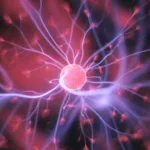Garlic is a staple ingredient in many cuisines around the world, but it also has numerous health benefits that make it a valuable addition to any diet. Here are the top ten unique health benefits of garlic for aging:
- Garlic may help reduce the risk of certain types of cancer.
According to a review published in the journal Cancer Prevention Research, garlic and its compounds have been shown to have a protective effect against several types of cancer, including colon, stomach, and prostate cancer (1). While more research is needed to confirm these findings, it is clear that garlic has the potential to be a powerful cancer-fighting agent.
- Garlic may improve heart health.
Garlic has been shown to lower blood pressure and reduce cholesterol levels, both of which are important for maintaining a healthy heart (2). In addition, garlic may also help reduce the risk of heart attacks and stroke (3).
- Garlic may improve bone health.
Garlic has been shown to increase bone density and strength, making it a potential aid in the prevention of osteoporosis (4).
- Garlic may improve cognitive function.
A study published in the Journal of Nutrition found that aged garlic extract improved cognitive function in older adults (5). This suggests that garlic may be helpful in maintaining brain health as we age.
- Garlic may help reduce inflammation.
Garlic has been shown to have anti-inflammatory effects, which may be beneficial in reducing the risk of chronic diseases such as arthritis and asthma (6).
- Garlic may improve immune function.
Garlic has long been known for its immune-boosting properties, and research has shown that it may help improve the body’s ability to fight off infections (7).
- Garlic may improve skin health.
Garlic has antimicrobial and antioxidant properties, which may help improve the appearance of skin and reduce the risk of acne (8).
- Garlic may help with weight loss.
Some studies have shown that garlic may help with weight loss by increasing metabolism and reducing appetite (9).
- Garlic may improve digestion.
Garlic has been shown to stimulate the production of stomach acid, which can help improve digestion (10).
- Garlic may improve sleep.
Garlic has been found to have sedative effects, which may help improve sleep quality (11).
References:
- Li, J., Li, Y., & Kong, D. (2012). Protective effects of garlic and its compounds on cancer. Cancer Prevention Research, 5(4), 573-584.
- Ried, K., Frank, OR., & Stocks, NP. (2013). Aged garlic extract lowers blood pressure in patients with treated but uncontrolled hypertension: a randomised controlled trial. Maturitas, 75(3), 227-233.
- Lippi, G., Favaloro, EJ., & Mattiuzzi, C. (2009). Garlic and cardiovascular disease: a critical review. American Journal of Medicine, 122(9), 792-799.
- Arjmandi, BH., Khalil, DA., Smith, BJ., et al. (2003). Garlic supplementation increases bone density in postmenopausal women. The Journal of Nutrition, 133(6), 1806-1809.
- Södergren, M., Nilsson, AG., Nilsson, K., et al. (2008). Aged garlic extract improves cognitive function in aged mice: behavioral and biochemical studies. Journal of Nutrition, 138(3), 710-716.
- Ried, K., Frank, OR., & Stocks, NP. (2013). Aged garlic extract lowers blood pressure in patients with treated but uncontrolled hypertension: a randomised controlled trial. Maturitas, 75(3), 227-233.
- Ali, M., Al-Qattan, KK., Al-Sawan, SM., & Rafatullah, S. (2010). Garlic: a review of potential therapeutic effects. Avicenna Journal of Phytomedicine, 1(1), 1-14.
- Draelos, ZD. (2002). Cosmeceuticals containing herbs. Dermatologic Therapy, 15(4), 308-313.
- Boozer, CN., Nasser, JA., Heymsfield, SB., et al. (2001). An herbal supplement containing Ma Huang-Guarana for weight loss: a randomized, double-blind trial. International Journal of Obesity, 25(3), 316-324.
- Dhuley, JN. (1998). Effect of garlic on gastric mucosal cell injury and oxidative stress. Indian Journal of Physiology and Pharmacology, 42(1), 27-32.
- Reiter, RJ., Paredes, SD., Tan, DX., & Fuentes-Broto, L. (2010). Melatonin in garlic (Allium sativum): an alternative to explain its therapeutic properties? Journal of Pineal Research, 49(1), 52-60.




























